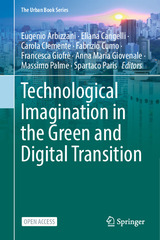Приказ основних података о документу
Energy Efficiency Improvement in Industrial Brownfield Heritage Buildings: Case Study of “Beko”
| dc.creator | Pavlović, Jelena | |
| dc.creator | Šabanović, Ana | |
| dc.creator | Ćuković Ignjatović, Nataša | |
| dc.date.accessioned | 2023-11-27T08:11:01Z | |
| dc.date.available | 2023-11-27T08:11:01Z | |
| dc.date.issued | 2023 | |
| dc.identifier.isbn | 978-3-031-29515-7 (eBook) | |
| dc.identifier.isbn | 978-3-031-29514-0 | |
| dc.identifier.issn | 2365-757X | |
| dc.identifier.issn | 2365-7588 (electronic) | |
| dc.identifier.uri | https://raf.arh.bg.ac.rs/handle/123456789/1672 | |
| dc.description.abstract | Brownfield sites often form on industrial sites of once successful compa- nies dating from the era of industrialization, due to loss of active function and despite their historical significance. Accompanied by urban decline, they contribute to continuous pollution, decrease in economic values, as well as loss of local iden- tity. On the other hand, they represent a reserve of space of great potential in central urban locations. The main purpose of this research is to examine possibilities for improvement by their reuse, while preserving built-in cultural values and acknowl- edging contemporary requirements. A review of contemporary literature considering the concept of brownfield sites provides a starting theoretical basis for understanding their strengths and potentials, as well as the problems when redeveloping such sites. The subject of the research is exploring strategies for brownfield revitalization while reactivating industrial buildings through adaptive reuse. This includes sustainable solutions in accordance with modern requirements, especially energy efficiency, as one of the main concepts of existing building stock improvement that recognizes importance of responsible energy resources management. The paper includes a case study of the previously devastated brownfield site of “Beko” industrial building, located in the central urban area of Belgrade. Its former state, as well as parts of the documentation for reconstruction and its conversion into a modern business facility “Kalemegdan Business Center,” is thoroughly analyzed, emphasizing the positive results of energy efficiency improvements despite the restrictions intended for historic buildings alterations. The aim of the paper is to create a theoretical plat- form that provides firm arguments in favor of realizing the importance and poten- tials of industrial brownfield sites revitalization at present, as well as the constraints regarding its practical implementation considering buildings of cultural value. | sr |
| dc.language.iso | en | sr |
| dc.publisher | Springer | sr |
| dc.rights | openAccess | sr |
| dc.rights.uri | https://creativecommons.org/licenses/by/4.0/ | |
| dc.source | Technological Imagination in the Green and Digital Transition | sr |
| dc.subject | Sustainability | sr |
| dc.subject | Brownfield | sr |
| dc.subject | industrial heritage | sr |
| dc.subject | Adaptive reuse | sr |
| dc.subject | Energy efficiency | sr |
| dc.title | Energy Efficiency Improvement in Industrial Brownfield Heritage Buildings: Case Study of “Beko” | sr |
| dc.type | conferenceObject | sr |
| dc.rights.license | BY | sr |
| dcterms.abstract | Павловић, Јелена; Шабановић, Aна; Ћуковић Игњатовић, Наташа; | |
| dc.citation.spage | 821 | |
| dc.citation.epage | 830 | |
| dc.identifier.doi | 10.1007/978-3-031-29515-7_73 | |
| dc.identifier.fulltext | http://raf.arh.bg.ac.rs/bitstream/id/5568/bitstream_5568.pdf | |
| dc.type.version | publishedVersion | sr |

